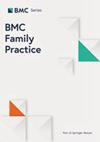Barriers to primary care among immigrants and refugees in Peterborough, Ontario: a qualitative study of provider perspectives
IF 3.2
3区 医学
Q1 MEDICINE, GENERAL & INTERNAL
引用次数: 0
Abstract
Canada’s immigrants and refugees have often settled in large Canadian cities, but this is changing with rising costs of living and rural settlement initiatives. However, little consideration is made regarding systemic changes needed to accommodate this distribution, particularly in healthcare in medium-sized cities or smaller communities. For most Canadians, primary care is an entry point into the healthcare system but immigrants and refugees face unique barriers to accessing care compared to the general Canadian population. This project aimed to better understand the barriers to accessing primary care among newcomers in Peterborough, Ontario from the perspective of newcomer service providers. Participants were recruited from community organizations identified by the local settlement agency, the New Canadians Centre, as having regular interactions with newcomer clients including clinics, not-for-profit organizations, and volunteer groups. Four focus groups were completed, each with three participants (n=12). A coding grid was deductively developed to guide thematic analysis by adapting Levesque et al.’s conceptual framework defining access to healthcare with five specific dimensions: approachability, acceptability, availability and accommodation, affordability, and appropriateness. Participants identified lack of awareness of the healthcare system, stigma, competing priorities, and direct costs as some of the barriers for newcomers. Participants highlighted barriers unique to Peterborough including proximity to services, social isolation, and a shortage of family physicians. The results also highlighted strengths in the community such as its maternal-child health programming. The results provide a glimpse of the challenges to accessing primary care among newcomers in medium-sized communities and identify opportunities to prepare for changing settlement patterns.安大略省彼得伯勒市移民和难民获得初级保健的障碍:对提供者观点的定性研究
加拿大的移民和难民通常定居在加拿大的大城市,但随着生活成本的上升和农村定居倡议的提出,这种情况正在发生变化。然而,人们很少考虑为适应这种分布所需的系统性变化,特别是在中等城市或较小社区的医疗保健方面。对于大多数加拿大人来说,初级保健是进入医疗保健系统的一个切入点,但与普通加拿大人相比,移民和难民在获得医疗保健服务方面面临着独特的障碍。本项目旨在从新移民服务提供者的角度,更好地了解安大略省彼得伯勒市的新移民在获得初级医疗服务时遇到的障碍。参与者来自当地安置机构 "新加拿大人中心"(New Canadians Centre)认定的与新移民客户有定期互动的社区组织,包括诊所、非营利组织和志愿者团体。共完成了四个焦点小组,每个小组有三名参与者(n=12)。通过改编 Levesque 等人的概念框架,以演绎的方式制定了一个编码网格来指导专题分析,该框架从五个具体维度定义了医疗服务的获取:可接近性、可接受性、可用性和便利性、可负担性和适当性。与会者指出,缺乏对医疗保健系统的认识、耻辱感、相互竞争的优先事项以及直接费用是新移民面临的一些障碍。与会者强调了彼得伯勒市特有的障碍,包括服务就近性、社会隔离和家庭医生短缺。调查结果还强调了社区的优势,如母婴健康计划。这些结果让我们看到了中等规模社区的新移民在获得初级医疗服务方面所面临的挑战,同时也确定了为不断变化的定居模式做好准备的机会。
本文章由计算机程序翻译,如有差异,请以英文原文为准。
求助全文
约1分钟内获得全文
求助全文
来源期刊

BMC Family Practice
医学-医学:内科
CiteScore
3.20
自引率
0.00%
发文量
0
审稿时长
4-8 weeks
期刊介绍:
BMC Family Practice is an open access, peer-reviewed journal that considers articles on all aspects of primary health care research. The journal has a special focus on clinical decision making and management, continuing professional education, service utilization, needs and demand, and the organization and delivery of primary care and care in the community.
 求助内容:
求助内容: 应助结果提醒方式:
应助结果提醒方式:


